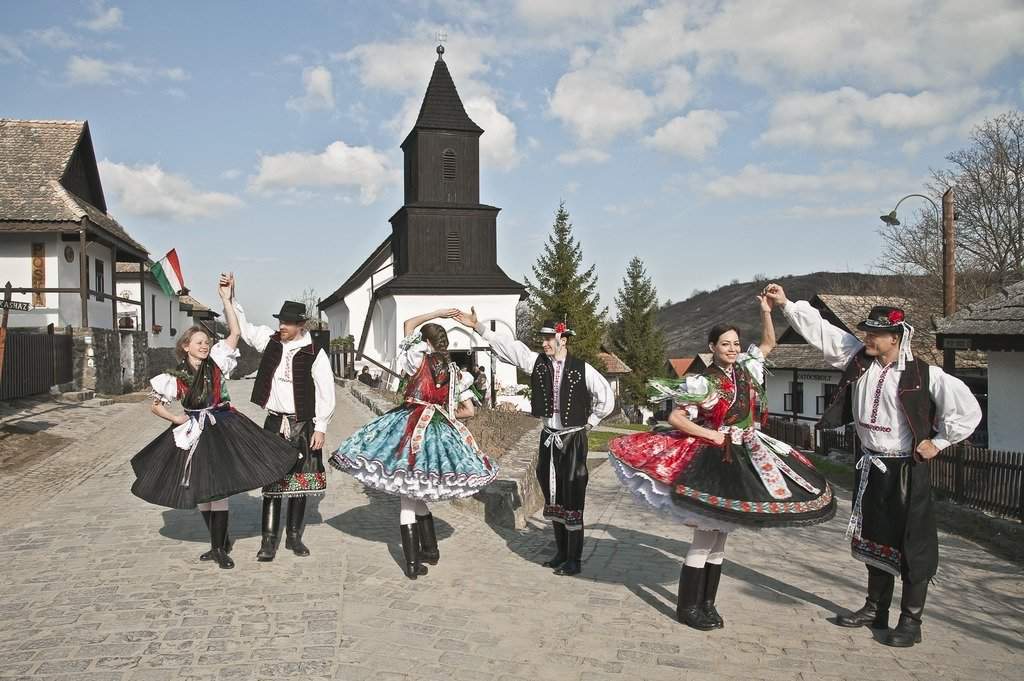Hollókő – a charming town in the mountains
Holókő hides in the picturesque landscape of the Cserhát Mountain in Hungary. It is worth a visit whether it is summer or winter!
The legend of Hollókő
As magyarorszagom.hu writes, the town’s fantastic history goes back to the XIII. Century.
‘Hollókő’ means ‘Ravenstone’ in English
and this name is in connection with a legend. According to the story, the lord of the castle captured a beautiful girl, but her nanny was, in fact, a witch. The nanny made a deal with the devil that he would help her release the girl. Servants of the devil concealed themselves as ravens and stole the stones of the lord’s castle. Castle of Hollókő was built from these stones later on.

Photo: www.holloko.hu
History and sights
If you come nearby, don’t miss on checking out the remains! The amazing exhibition of weapons, cannon-balls and engraved objects will definitely compensate for climbing up on the steep hill. If it’s not enough, then the breathtaking view of the entire Bükki National Park will doubtlessly convince you.
Because of the tached roofs, the town was burnt several times until the middle of the XX. Century. In 1909, the town successful renovated its buildings to their original look. However, this time clay brick walls and tiled roofs were used to avoid similar accidents. Nevertheless, the typical middle-aged arrangement of the town remained clearly visible. There is only one main street from which smaller streets branch off.
In the middle of the city, there is the Roman Catholic church since 1889. It has wooden towers and a tiled roof. The 67 peasant cottages have characteristic, tilted roofs and carved wooden backs.
The inside of the houses

Photo: www.holloko.hu
Inner set-up of the furniture follows the palóc ethnic group’s style from the XVII. Century. It means three separated rooms. Stepping inside from the porch, we can see a kitchen and a dining room first. During winter time, this place was the warmest because of the fireplace. The pantry opens from the kitchen and dining room. People used it to store food and agrarian tools. Older relatives used to rest here during the evening. The so-called ‘clean-room’ looks to the front and it is the most decorated room in all houses. In Hollókő, on the contrary of other towns – the ‘clean-room’ functioned not only for hosting guests but also for the lord of the house and his family.
As the size of families grew, the houses had to grow as well. This is how they gained the form we can see today. One of these houses is used as a museum. Here, you can take a look at what arrangement of the furniture and decoration of the house. If you are interested in the traditional artisanship, you should visit the weaving house.
Hollókő, a town full of life
On the other hand, Hollókő is not an open-air museum.
People live here, therefore you can find a town hall, a school, a post office, accommodations, and restaurants, too.

Photo: www.facebook.com/IloveHolloko
The town of 400 people is the home of the palóc people. Traditional members of this ethnic group keep their heritage alive. They do wear their national costume and dance their famous dance on holidays and special occasions. Young girls’ and brides’ mesmerising dresses are especially notable. If you want to take part in a lovely Easter holiday celebration, you have to visit Hollókő since this is the town’s most important holiday. During this season,
locals make a tribute to their traditions and put a big emphasis on handicraft.
It’s hard to find a date when nothing exciting is happening in Hollókő. Some of their popular programmes are the Raspberry Festival and the Hollókő Castle Games.
The easiest way to find Hollókő is to drive on the M3 highway, turn at Hatvan, then follow Road 21 and turn at Pásztó to the direction of Hollókő.
For more information about a charming little town with its wonder, click here.
Featured image: Wiki Commons
Source: magyarorszagom.hu
please make a donation here
Hot news
What happened today in Hungary – 26 July, 2024
Drama: number of births in a 20-year low in Hungary
Yay or nay? – 6 odd Hungarian delicacies that make our skin crawl
Budapest tourism “exploded” this past weekend
Container transport in Budapest may stop: How will this affect Hungarian economy?
Minister: Hungary will protect its territory by every means possible




